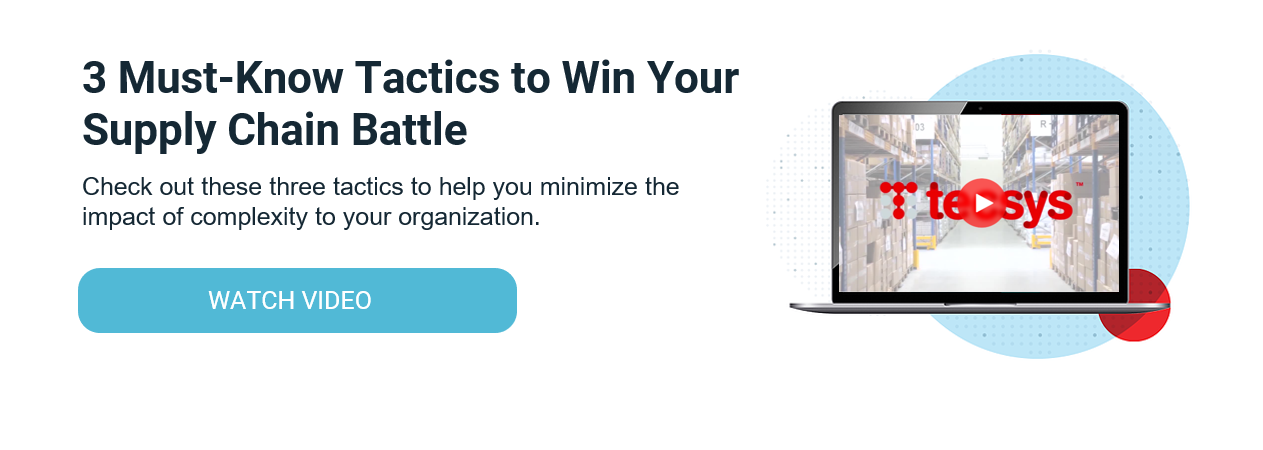
If I want to take the train from Cannes to Paris, France’s SNCF ticketing platform will give me different options that show me the environmental impact of my choice: 2kg of CO2 on the TGV INOUI or 5.3kg on the TER/OUIGO. Google Flights tells me the exact carbon emission of each itinerary. As an empowered consumer, I can make choices that are more efficient for the service provider and greener for the world.
Yet in the world of supply chain, despite being a major contributor of the environmental footprint of all goods in movement, we aren’t terribly good at either measuring or curbing the environmental impact of these supply chain activities. But it’s time to stop dragging our feet.
In a recent episode of The Great Supply Chain Podcast entitled Are Agility and Sustainability Still Just Buzzwords? We Ask Two “Supply Chain Pros to Know” we look at the underbelly of sustainability, what got us to where we are today, the role of agility in the sustainability equation, and what some organizations can do across the healthcare and general distribution space to advance the mandate of sustainability in a financially sustainable manner. In it, Bill Denbigh and I ventured to understand what that looks like on a pragmatic level by speaking with two of 2021’s Supply Chain Pros to Know, Meredith Levkneckt and Cory Turner.
Indeed, the theme of sustainability has shifted from rhetoric to reality across the country and this is slated to have a profound impact on logistics operations both up and down the supply chain. Converging markets have already introduced massive inefficiencies into our supply chain workflows that had been designed to function more linearly.
“Supply chains in many ways, from a greenhouse gas emission standpoint, were actually far more efficient 20 years ago, when factories shipped truckloads, and distributors received pallets, and retailers received those pallets, and we went and picked up each in stores. The fact that we’ve now got hundreds of trucks delivering individual packages to doorsteps all over the world is an environmental catastrophe,” explained Peter Brereton, Tecsys’ president and CEO, in a recent roundtable with FORTUNE Magazine.
At Tecsys, we contend that supply chain — and more specifically, supply chain transparency — is a crucial piece of the sustainability puzzle. Consumers who are able to make informed decisions are the best catalysts for sustainability. As supply chain professionals, we need to get our houses in order and make sure that the systems we have in place, the data we are collecting, the analytics we are using, and the technology we are leveraging, are all capable of falling into line to help take on simple, low-hanging environmental initiatives, as well as plan for the larger, more strategic initiatives.
Certainly, at Tecsys, we appreciate our role in the stewardship of environmentalism. We have been recognized with three Green Supply Chain Awards through Supply & Demand Chain Executive in 2018, 2020 and 2021. In each of these submissions, we have done some calculus to connect the operational efficiencies we generate at customer sites with the environmental benefits those efficiencies represent. But like most of you, we recognize that there is plenty of room to grow.
3 Key Takeaways
1. We Move the Sustainability Mountain One Stone at a Time
Sustainability seems to have taken a backseat during this pandemic. However, it is no longer a nice to have; it has become a business imperative. Organizations must be creative in collaborating with their partners and flexible to address the environmental impact of supply chain waste and inefficiency.
2. A Supply Chain’s Strength Lies in Its Flexibility
Having an agile supply chain is a necessity in a modern distribution environment because it allows your infrastructure to bend rather than break when faced with severe disruption. That same agility can be used as a vehicle for sustainability initiatives as we navigate these evolving priorities.
3. The Customer Is Always Number One
Across industries, every decision must be made with the ultimate customer in mind; in general distribution, this often means catering to consumer preferences and expectations. In healthcare, this translates to patients driving every decision we make, from warehouses to delivery to point of care. Every supply chain decision impacts those at the point of consumption, so whether it’s a customer or a patient, we must remember that getting the right supplies to the right person at the right time is always about them.



